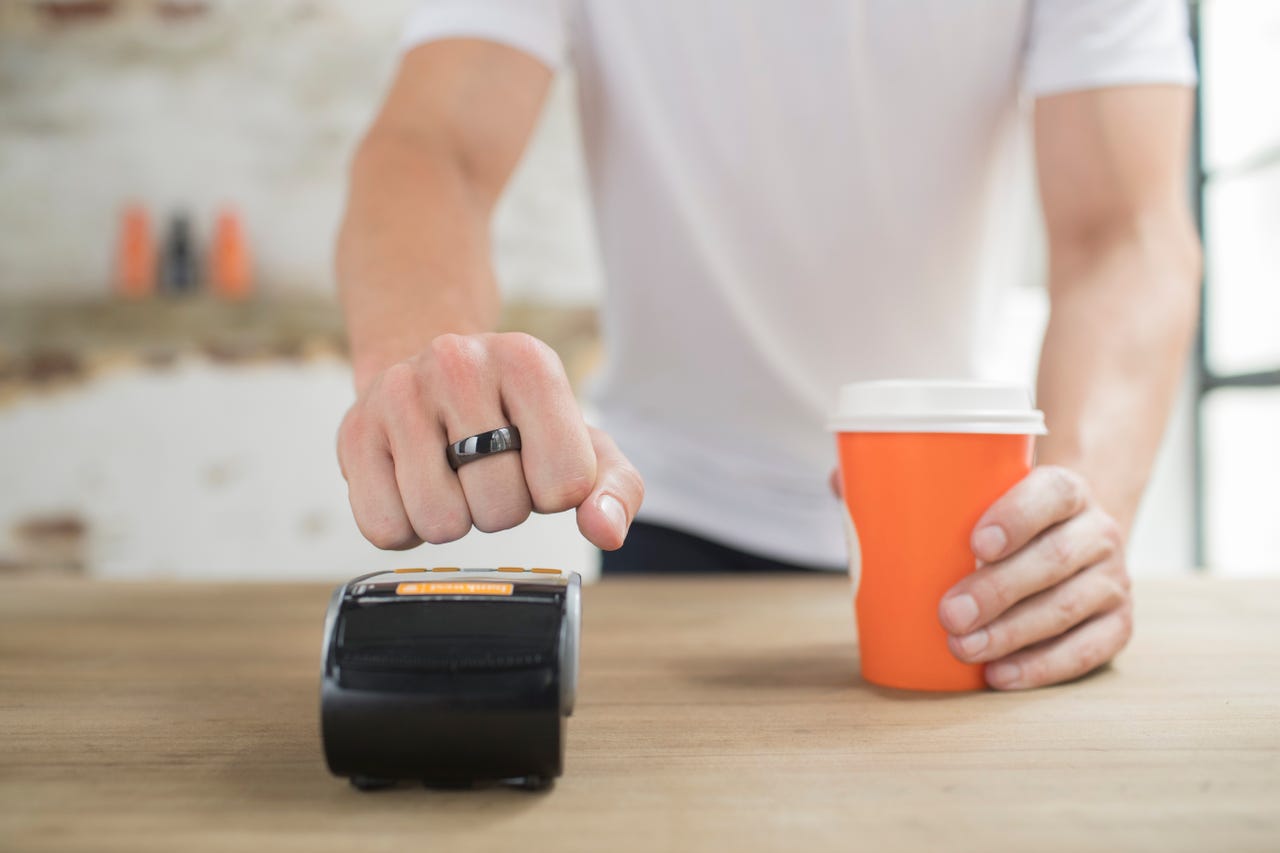Bankwest's Halo payments ring born out of 'agile' approach to banking


Bankwest has launched a new way to pay, a ring dubbed Halo that allows customers to "tap and go" at locations where they would otherwise use their card.
The ring, priced at AU$39, follows trials the bank conducted last year that saw a choice of wearable devices used by Bankwest staff and customers. The release of Halo is in response to the feedback obtained during the trial.
According to Bankwest, the speed in which it brought Halo to market is the result of Bankwest's adoption of new ways of working, which is described by the Commonwealth Bank-owned company as a "customer-obsessed, agile approach", as traditional waterfall methodology would have delayed the delivery of such products.
Staff with skills in design thinking, software engineering, product development, and marketing worked together on the offering, the bank explained, which also included individuals hailing from the medical research space.
"Bankwest is leveraging both new technologies and new ways of working, to meet rapidly changing customer needs and we're transforming into an environment with the very best technology, design and creative professionals, who think and act differently," executive general manager, Technology and Transformation Andy Weir said.
"The team used a mixture of lean, agile, and design-thinking, within an iterative test-and-learn approach. It's been hugely energising and satisfying to see the new ways of working in action, which provide a great test case for our customer-obsessed approach."
Weir expects the learnings from the Halo initiative will be shared across all of the bank's multi-disciplinary "tribes" as it expands the rollout to the new ways of working.
Speaking with ZDNet previously, Bankwest technical product owner for APIs, Services Engineering, Enterprise Services Rob Crowley said the banking sector now finds itself in a position where it needs to continually evolve and adapt to meet changing customer needs and community expectations.
"Banking used to be about product and price, whereas now our focus at Bankwest is on delivering customer experiences, particularly through digital channels," he said.
"Digital is now ubiquitous and this has driven higher expectations for what represents a truly great customer experience. In the face of this sweeping wave of change, it will not be the company that has the perfect strategy at a given point in time that will survive, but rather the ones who can react quickly to changing customer demands.
"Effectively, it will be a case of survival of the most adaptable, and technology will play a key part in enabling that."
Halo links to a customer's Bankwest transaction account and works just like a contactless payment card and has the same security as a Bankwest Mastercard.
Fully waterproof up to 50m, and available in black or white, customers can order the AU$39 ring through the Bankwest website or app, as well as in store.
Halo is the latest wearable payment device offered by an Australian bank, despite reports that although the tap-and-go function is heavily utilised in Australia, less than 1 percent of contactless payments are conducted via mobile or wearable means.
Bankwest's parent CBA announced in September it will be allowing customers to make payments using their Garmin smartwatch.
With the smartwatches from the American multinational starting at AU$299, the bank said the offering opens up more ways for its 4.4 million app-based banking customers to pay.
Meanwhile, another one of CBA's wholly-owned subsidiaries, ASB Bank, announced the New Zealand availability of payments via Fitbit Ionic in October, allowing customers with the wearable giant's new smartwatch to pay via a watch tap.
Similarly, Australia and New Zealand Banking Group (ANZ) also went live with the Fitbit payments solution in October.
Instead of plugging into devices manufactured by Garmin or Fitbit, Westpac launched its own range of wearable, hands-free, and battery-free payment accessories.
CBA, alongside Westpac and the National Australia Bank (NAB), recently announced a new joint venture named Beem that is charged with developing a mobile wallet for iOS and Android users.
According to the banks, customers will be able to use the app regardless of which bank they use, including organisations outside of the trio, with the end goal to be creating an "industry-wide payment solution".
Beem followed the banks, alongside Bendigo and Adelaide Bank, labelling Apple Pay alternatives "unrealistic" in the Australian market while the cartel was seeking to gain regulatory approval to collectively bargain with Apple for open-access to the NFC antenna on the iPhone.
The banks lost their fight against Apple in March.
PREVIOUS AND RELATED COVERAGE
Bankwest sends broker site to the public cloud with AWS Lambda
The latest initiative in Bankwest's 'cloud-first' approach to service delivery has seen the security gateway for its broker website delivered via Lambda.
Australian Apple Pay-avoiding banks announce their own Beem mobile wallet
Westpac, NAB, and CBA have created a joint venture to take a new wallet to iOS and Android devices later this year.
ANZ bank adds Garmin Pay to its payment repertoire
Now boasting six different payment wallets, ANZ bank has added Garmin Pay to the mix.
Westpac opts for own wearable 'PayWear' devices
Instead of plugging into devices manufactured by Garmin or Fitbit, the Australian bank has launched its own range of wearable, hands-free, and battery-free payment accessories.
The dark side of wearables: How they're secretly jeopardizing your security and privacy (TechRepublic)
The seductive lure of activity and health wearables make it easy to forget, or ignore, the inherent security and privacy risks involved.
IDC report: Basic wearable devices drop in sales while smartwatch shipments grow (TechRepublic)
Wearables that do not run third-party apps suffered a decline in sales in Q2. Meanwhile, smartwatch sales grew 10.3% during the same time period.